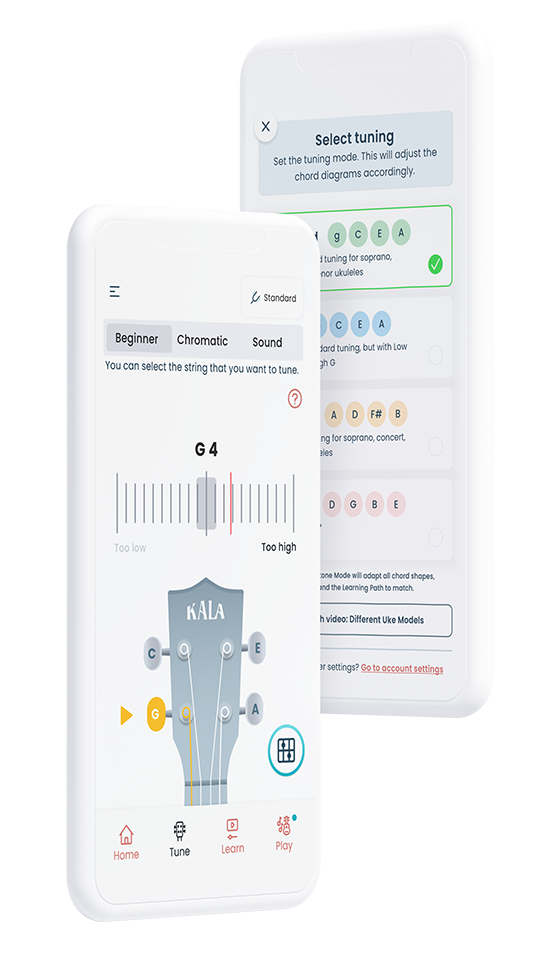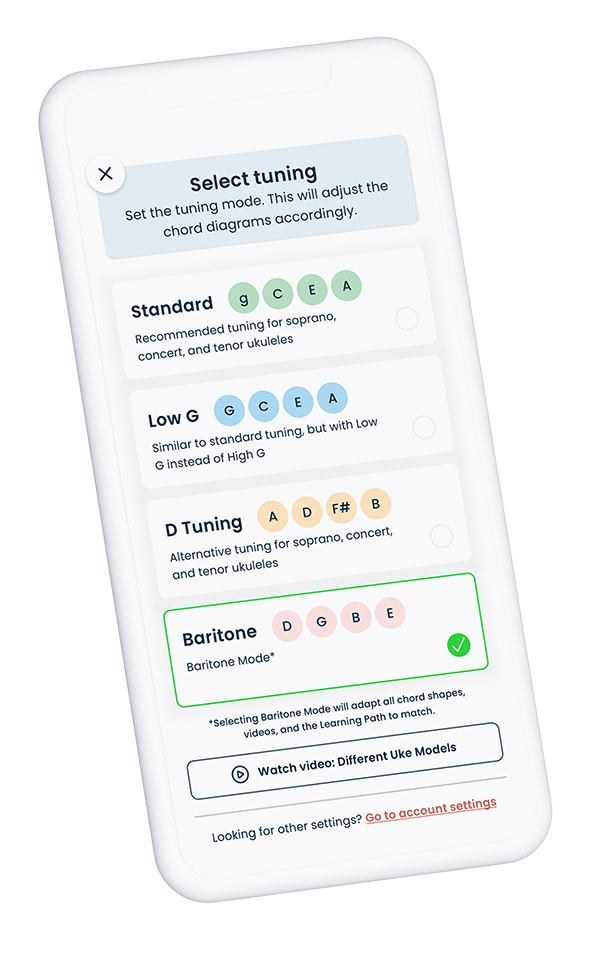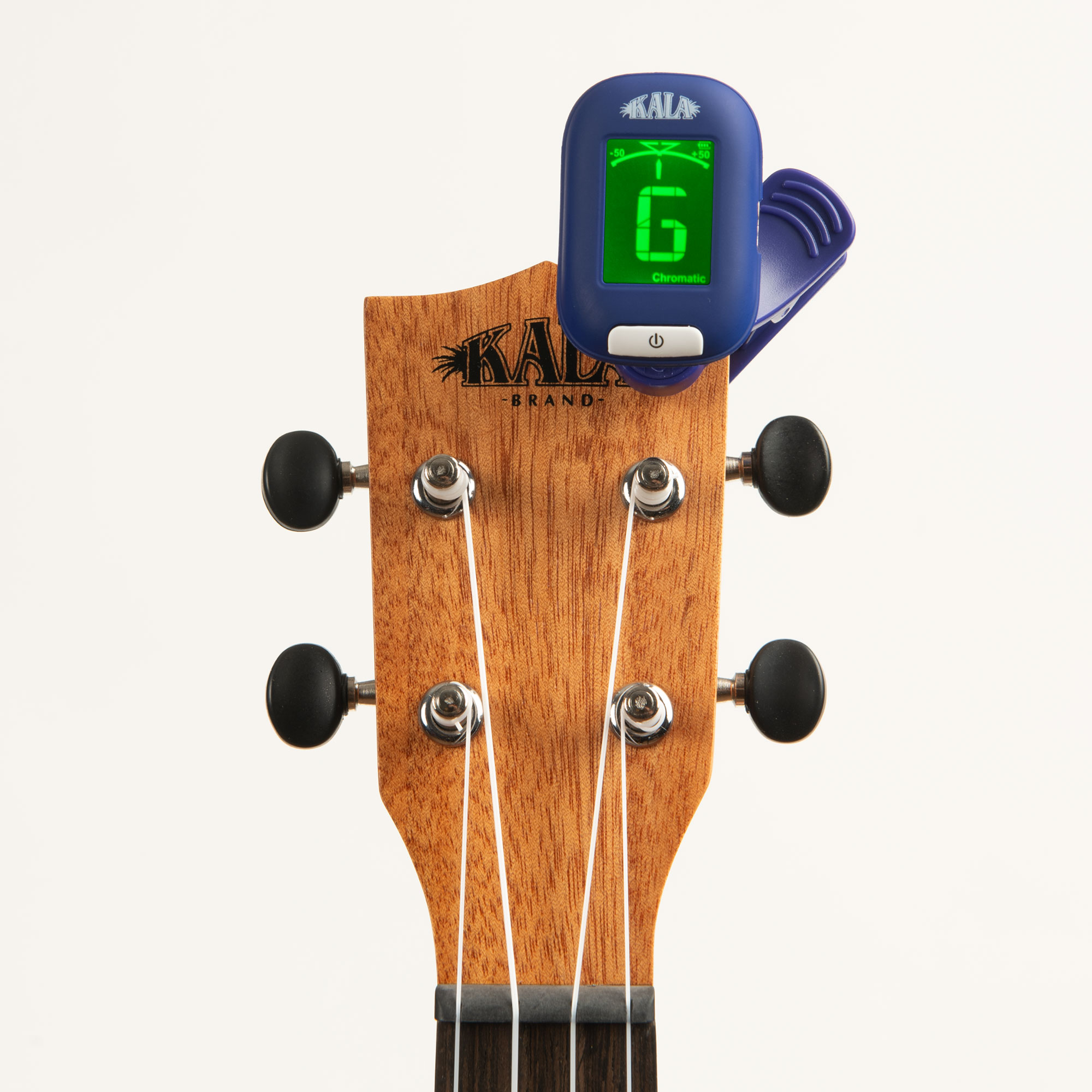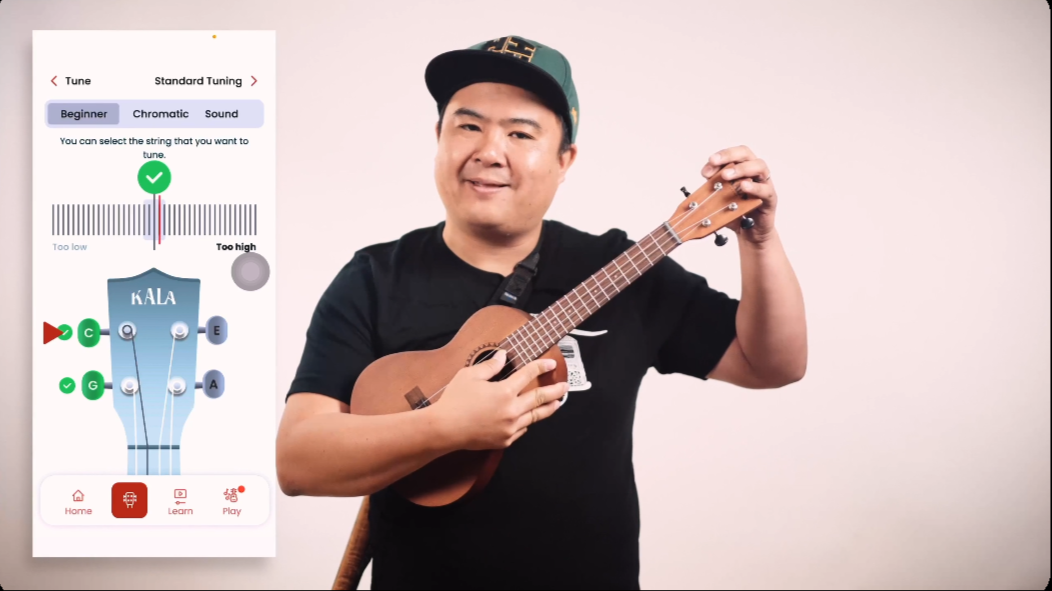One of the most essential steps to sounding great on the ukulele is making sure your instrument is properly tuned. Even the best chords and strumming techniques won’t sound right if your uke is out of tune. That’s why every ukulele player, especially beginners, should learn how to tune their instrument correctly.
In this guide, we’ll break down the basics of ukulele tuning, explore different tuning methods, and introduce some handy tools—including the Kala Ukulele App—that will help you stay perfectly in tune from your very first strum.
Why Tuning Matters
Tuning isn’t just about sounding good—it’s about training your ear, building muscle memory, and staying motivated. When your ukulele is properly tuned:
Chords sound clear and correct
Songs are more enjoyable to play and listen to
You develop a stronger sense of pitch and tone
Learning to tune your ukulele is one of the first milestones in your musical journey. And the good news? It’s easier than you might think.

Standard Ukulele Tuning: G-C-E-A
The most common tuning for soprano, concert, and tenor ukuleles is G-C-E-A, from top string (closest to your face) to bottom string (closest to the ground).
Here’s a quick breakdown:
G (4th string) – The top string when holding the ukulele
C (3rd string) – The next string down, and the lowest pitch
E (2nd string)
A (1st string) – The bottom string, and the highest pitch
This tuning is also called C6 tuning and is the default used in most tutorials, chord charts, and sheet music.
The “Grey Cats Eat Almonds” mnemonic is a classic way to remember the standard tuning notes: G – C – E – A.
What About Baritone Ukuleles?
Baritone ukuleles are tuned differently: D-G-B-E—the same as the highest four strings of a guitar. This gives baritone ukes a deeper, mellower tone, but it also means chord shapes and learning resources will be different.
The Kala Ukulele app has a Baritone mode, selected on the Tuner page, which changes the tuner and chord grips to suit the Baritone ukulele.
If you’re a beginner with a soprano, concert, or tenor uke, stick with G-C-E-A tuning.

How to Tune Your Ukulele
There are several ways to tune your ukulele, and each has its own advantages. Here’s a look at the most popular methods for beginners:Paragraph text here
1. Using a Tuning App (Recommended)
Tuning apps are a favorite among new players, thanks to their convenience and versatility. The Kala Ukulele App includes a built-in tuner that uses your device’s microphone to help you tune each string with visual feedback.
How to use:
Open the tuner app and place your phone or tablet close to the ukulele
Pluck one string at a time.
Adjust the tuning peg until the tuner shows the correct note (G, C, E, or A).
Why the Kala App is great for tuning:
No extra device needed
Works on both iOS and Android
Clear indicators show whether a note is too flat, too sharp, or just right
Designed specifically for ukuleles
For Baritone ukulele, select Baritone mode on the upper right corner of the Tuner page
It’s a perfect tool for beginners who want to learn, play, and stay in tune—all from one place.
2. Using a Clip-On Tuner
Clip-on tuners attach to your ukulele’s headstock and detect pitch through vibration. These are especially helpful in noisy environments.
How to use:
Turn on the tuner and clip it to the headstock.
Tune the strings one by one
Clip-on tuners are affordable and accurate, but they’re just one option.

3. Tuning by Ear (For Developing Musicianship)
Tuning by ear helps improve your sense of pitch, but it takes practice. You’ll need a reference note (like a piano or pitch pipe) and then tune each string to match it.
Steps:
Play a reference G note (like from the Kala App or a piano)
Adjust your G string until it matches
Do the same for C, E, and A
Eventually, your ear will become more accurate, but early on, use this method alongside a digital tuner or app.
Understanding Ukulele Tuning Pegs
To adjust the pitch of a string:
Tighten (turn peg to increase tension) to raise the pitch.
Loosen (turn peg to decrease tension) to lower the pitch.
If your strings are new, they may go out of tune quickly. This is normal. Stretching and settling takes a few days. Just keep tuning regularly—eventually they’ll stabilize.
Troubleshooting Common Tuning Issues
1. My uke won’t stay in tune!
This is common with new ukuleles or brand-new strings. Strings need time to stretch and settle.
2. Why do my chords still sound off even though I tuned it?
Check your finger placement. If your fingers press the string too close to a fret or at an angle, it can distort the pitch. Also, double-check your tuning with the Kala App.
3. One string sounds very different than the others.
It may be out of tune, or possibly the wrong gauge of string. Verify the correct string is installed for your ukulele type.
Tuning Tips for Beginners
Tune before every session – Always start practice with a quick tuning.
Tune in a quiet space – Background noise can interfere with app-based tuning.
Check tuning mid-session – Strings may slip slightly while you play.
Use the Kala App daily – Its tuner is fast, beginner-friendly, and always accessible.
How the Kala Ukulele App Can Help
Tuning is just the beginning. The Kala Ukulele App is an all-in-one learning platform that helps beginners go from their first tuning to confidently playing songs.
Here’s how it supports your learning:
🎵 Built-in Tuner – Accurate and responsive, tailored for ukulele tuning.
📚 Step-by-Step Lessons – Learn chords, strumming, and techniques with guided lessons.
🔁 Progress Tracking – Keep tabs on your daily practice and improvement.
🌐 Anywhere Access – Use it at home, on the go, or even on vacation.
Whether you’re just tuning up or diving into full lessons, the app is like having a ukulele coach in your pocket.
Final Thoughts
Learning how to tune your ukulele is one of the simplest, most important habits you can form as a beginner. With just a few minutes of tuning each day, you’ll build better sound quality, stronger musicianship, and more confidence in your playing.
And thanks to the Kala Ukulele App, tuning has never been easier. You’ll not only get your instrument sounding perfect, but you’ll also unlock tools that help you progress into a capable, confident player.
So go ahead—tune up, dive in, and let the music begin. Happy strumming!

